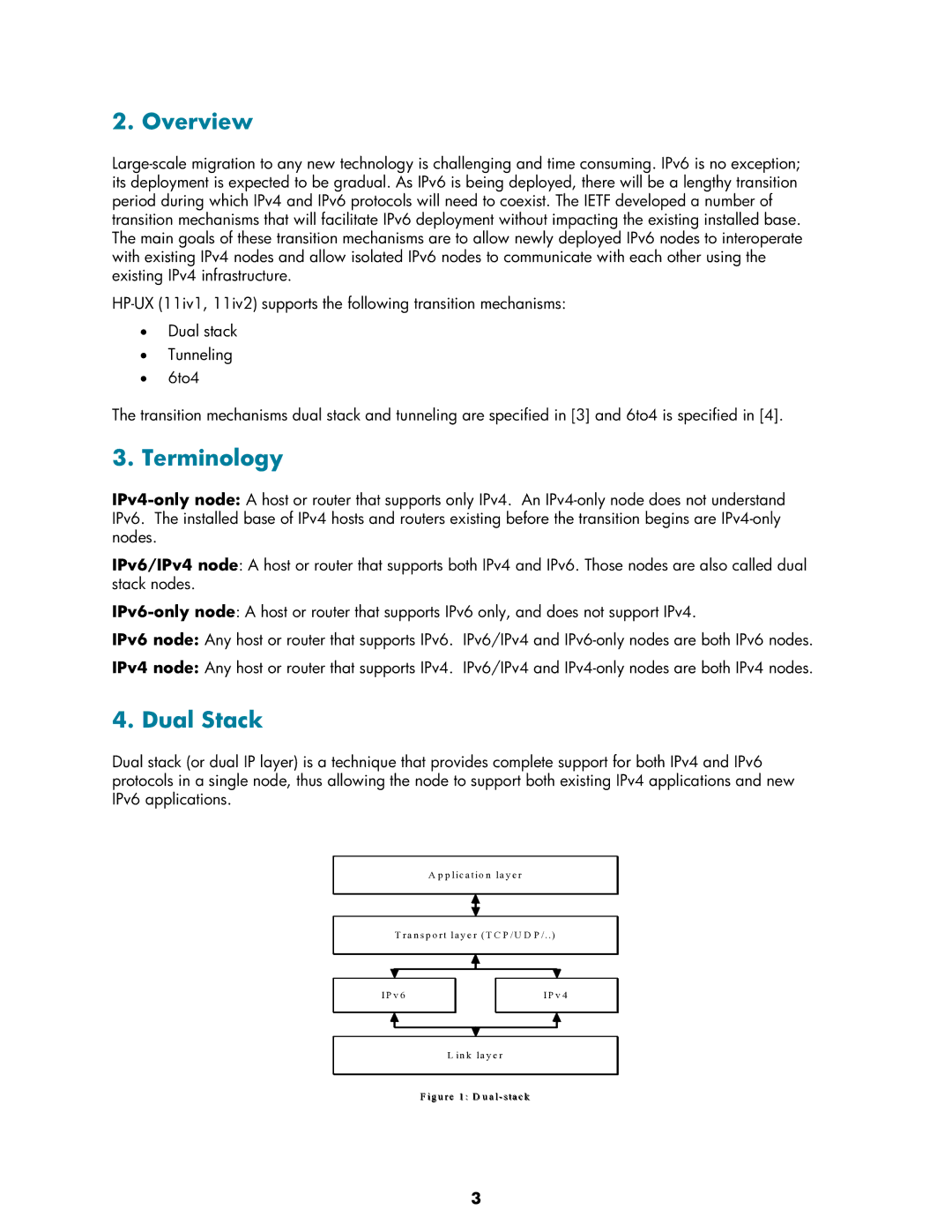
2. Overview
Large-scale migration to any new technology is challenging and time consuming. IPv6 is no exception; its deployment is expected to be gradual. As IPv6 is being deployed, there will be a lengthy transition period during which IPv4 and IPv6 protocols will need to coexist. The IETF developed a number of transition mechanisms that will facilitate IPv6 deployment without impacting the existing installed base. The main goals of these transition mechanisms are to allow newly deployed IPv6 nodes to interoperate with existing IPv4 nodes and allow isolated IPv6 nodes to communicate with each other using the existing IPv4 infrastructure.
HP-UX (11iv1, 11iv2) supports the following transition mechanisms:
•Dual stack
•Tunneling
•6to4
The transition mechanisms dual stack and tunneling are specified in [3] and 6to4 is specified in [4].
3. Terminology
IPv4-only node: A host or router that supports only IPv4. An IPv4-only node does not understand IPv6. The installed base of IPv4 hosts and routers existing before the transition begins are IPv4-only nodes.
IPv6/IPv4 node: A host or router that supports both IPv4 and IPv6. Those nodes are also called dual stack nodes.
IPv6-only node: A host or router that supports IPv6 only, and does not support IPv4.
IPv6 node: Any host or router that supports IPv6. IPv6/IPv4 and IPv6-only nodes are both IPv6 nodes.
IPv4 node: Any host or router that supports IPv4. IPv6/IPv4 and IPv4-only nodes are both IPv4 nodes.
4. Dual Stack
Dual stack (or dual IP layer) is a technique that provides complete support for both IPv4 and IPv6 protocols in a single node, thus allowing the node to support both existing IPv4 applications and new IPv6 applications.
A p p lication layer
T ran sp o rt layer (T C P /U D P /..)
L in k layer
F ig u re 1 : D u al-stack
3

